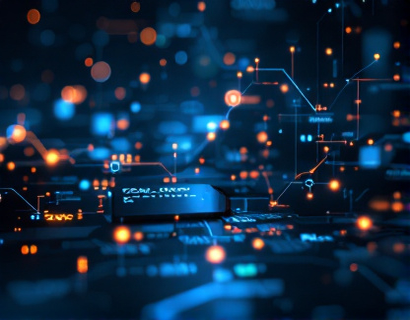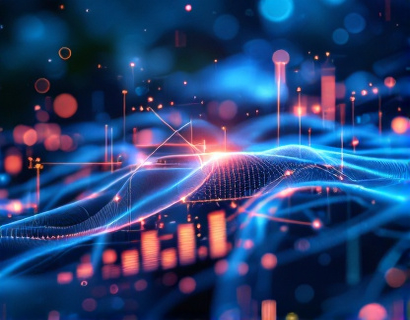Ucosystem Essentials: A Beginner's Guide to Simplifying Interconnected Complexity
The modern digital landscape is increasingly characterized by interconnected systems and networks, often referred to as the Ucosystem. This term encapsulates the intricate web of technologies, platforms, and services that work together to create a seamless and integrated user experience. For individuals new to this concept, understanding the Ucosystem can seem daunting due to its complexity. This guide aims to break down the Ucosystem into manageable components, highlighting its key benefits and providing a clear pathway for navigation.
Understanding the Ucosystem
The Ucosystem is not a single entity but a collection of interconnected systems that include software applications, hardware devices, data networks, and user interactions. At its core, the Ucosystem is about creating a cohesive environment where different components communicate and function together efficiently. This interconnectedness is driven by advancements in technology, particularly in areas like the Internet of Things (IoT), cloud computing, and artificial intelligence (AI).
To grasp the Ucosystem, it's essential to recognize that it operates on several layers. The first layer consists of the physical devices and hardware that users interact with daily, such as smartphones, smart home devices, and wearables. These devices are connected to the internet and can collect, send, and receive data. The second layer involves the software applications and platforms that run on these devices, providing functionalities like social media, messaging, and e-commerce. The third layer is the data itself, which is the lifeblood of the Ucosystem, enabling personalized experiences and intelligent decision-making.
Key Components of the Ucosystem
1. Devices and Hardware: The foundation of the Ucosystem is the array of devices that users engage with. These range from traditional computers and laptops to more specialized devices like smart speakers, fitness trackers, and smart home appliances. Each device plays a role in collecting data and executing commands, contributing to the overall functionality of the Ucosystem.
2. Networks and Connectivity: Reliable and fast internet connectivity is crucial for the Ucosystem to function seamlessly. This includes Wi-Fi, cellular networks, and other communication protocols that ensure devices can exchange data in real-time. The quality and accessibility of these networks directly impact the user experience.
3. Cloud Computing: Cloud services provide the infrastructure for storing, processing, and managing data across the Ucosystem. Cloud platforms like AWS, Google Cloud, and Microsoft Azure offer scalable resources that enable applications to handle large volumes of data and users without compromising performance.
4. Artificial Intelligence and Machine Learning: AI and ML technologies are integral to the Ucosystem, enabling devices and applications to learn from data, make predictions, and automate tasks. These technologies enhance user experiences by providing personalized recommendations, predictive maintenance, and intelligent assistants.
5. Data and Analytics: Data is the backbone of the Ucosystem, driving insights and optimizations. Data collection, storage, and analysis are critical for understanding user behavior, improving services, and creating targeted marketing strategies. Advanced analytics tools help businesses make data-driven decisions and enhance their offerings.
Benefits of the Ucosystem
The Ucosystem offers numerous benefits that enhance the way individuals and organizations operate. Some of the key advantages include:
- Convenience and Efficiency: By integrating multiple services and devices, the Ucosystem simplifies tasks and reduces the need for manual intervention. For example, smart home systems allow users to control lighting, temperature, and security with voice commands or a single app.
- Enhanced User Experiences: Personalization is a cornerstone of the Ucosystem, enabling services to adapt to individual preferences and behaviors. This leads to more relevant and engaging interactions, whether it's through tailored content, product suggestions, or customized settings.
- Improved Productivity: Businesses can leverage the Ucosystem to streamline operations, automate processes, and gain valuable insights from data. This results in increased efficiency, better resource management, and a competitive edge.
- Cost Savings: By optimizing resource usage and reducing the need for physical infrastructure, the Ucosystem can lead to significant cost reductions. Cloud services, for instance, allow businesses to pay only for the resources they use, eliminating the need for expensive hardware investments.
- Innovation and Growth: The interconnected nature of the Ucosystem fosters innovation by enabling new applications and services. Developers can build on existing platforms and APIs, creating a vibrant ecosystem of third-party tools and integrations that drive growth and creativity.
Navigating the Ucosystem
For beginners, navigating the Ucosystem can be challenging due to its complexity and the rapid pace of technological change. Here are some steps to effectively understand and utilize the Ucosystem:
1. Start with the Basics: Begin by familiarizing yourself with the fundamental concepts and components of the Ucosystem. Understand the roles of devices, networks, cloud services, AI, and data. Online tutorials, introductory courses, and beginner-friendly resources can provide a solid foundation.
2. Explore Popular Platforms: Familiarize yourself with widely used platforms and services that form the core of the Ucosystem. This includes operating systems like Android and iOS, cloud providers like AWS and Google Cloud, and popular applications like Google Assistant and Amazon Alexa.
3. Experiment with Devices: Get hands-on experience by using various devices that are part of the Ucosystem. Smart speakers, wearables, and smart home devices can help you understand how these technologies integrate and interact.
4. Stay Informed: The Ucosystem is constantly evolving, so staying updated with the latest trends and developments is crucial. Follow tech blogs, join online communities, and attend webinars to keep your knowledge current.
5. Focus on Security and Privacy: As you navigate the Ucosystem, prioritize your security and privacy. Understand the settings and permissions of the devices and services you use, and adopt best practices to protect your personal information.
Conclusion
The Ucosystem represents a significant shift in how technology is integrated into our daily lives. By breaking down its complex components and understanding its benefits, individuals can better navigate and leverage this interconnected landscape. Whether for personal convenience, enhanced productivity, or business innovation, the Ucosystem offers a wealth of opportunities for those willing to explore and adapt.










































